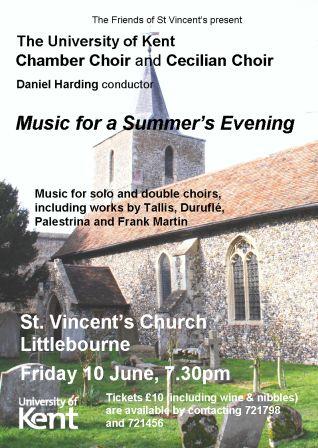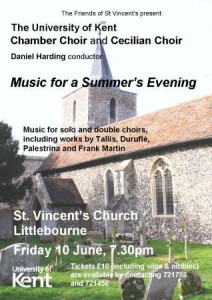It’s often said that the only parts of a concert programme an audience remembers are the start and the finish, and for a great concert, only the first and last pieces need to be good – anything that comes in the middle is forgotten. If this is true, then on the strength of last night’s rehearsal of pieces to open and close the programme, our concert in six weeks’ time is going to be brilliant.
 With the Advent antiphons having worked so well in the concert last term, the February programme will open with a piece of plainchant for Matins and finish with one for Compline. Rehearsals resumed last night with the first of these, which will lead into the unfurling, evocative colours of Barnum’s Dawn; the latter piece is really beginning to find its feet, and the aleatoric concluding section with the sopranos and altos each dwelling on a single, separate note evoking the hue of sunrise, is developing nicely. The plainchant takes some getting used to – reading off four staves rather than the latter tradition of five and working out where the Latin inflection leads certainly focuses the mind…
With the Advent antiphons having worked so well in the concert last term, the February programme will open with a piece of plainchant for Matins and finish with one for Compline. Rehearsals resumed last night with the first of these, which will lead into the unfurling, evocative colours of Barnum’s Dawn; the latter piece is really beginning to find its feet, and the aleatoric concluding section with the sopranos and altos each dwelling on a single, separate note evoking the hue of sunrise, is developing nicely. The plainchant takes some getting used to – reading off four staves rather than the latter tradition of five and working out where the Latin inflection leads certainly focuses the mind…
The main focus of last night was the two Italian Giants of the programme, Lassus’ O Sonno and Monteverdi’s Ecco mormorar l’onde. Two contrasting Renaissance pieces here, each challenging in their own way. Our main intent with the Monteverdi is to revel in the rich polyphonic writing – the piece has the lines weaving and tumbling over one another in its depiction of the murmuring waves, rustling foliage and gentle breezes – until the closing, homophonic section, which should then come as a relief.
Two English pieces followed, a piece new to the group in Dowland’s Awake, Sweet Love, and a revisiting of Vaughan Williams’ Rest. The key to the latter is maintaining a firm grasp of the dynamic range, and ensuring the full range of contrasting contrasts is explored.
Moving between standard and mixed formation, we concluded with the final work, our surprise encore, about which I can’t reveal too much here, except to say it’s an arrangement I’ve written of a pop tune that has the explore indulging its jazzier, do-wop style, in total contrast to everything else we’ll be singing. Persuading the group to adopt a more American swing-style approach proved no problem at all, and there was some swaying, finger-clicking and sugary harmonies with which to finish the concert.
The secret of all good rehearsals is planning, focus, and cake, it seems. During the half-way break, Emma brought forth a box of lemon cakes she had prepared for everyone – I’m not sure if there’s an accredited baking module as part of her degree, but she’s studying Drama, so you never know – which proved extremely popular. No wonder the second half of the rehearsal went so well, everyone’s blood-sugar levels were probably re-stocked. What’s for next week, then ?


